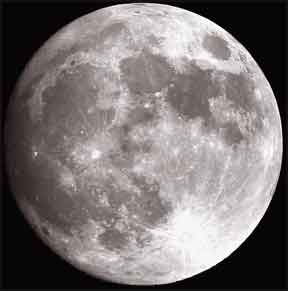China 'could reach moon by 2020'
By Paul Rincon
China is capable of sending a manned mission to the Moon within the
next decade, if it so wishes, Nasa administrator Michael Griffin has
said.
The US space agency plans to return people to the lunar surface by
2020 using its new Orion spacecraft.
But it is just possible the first people on the Moon since the Apollo
17 mission in 1972 could be planting a flag with five stars, not 50.
In 2003, China became only the third country to launch a person into
orbit.

Speaking to the BBC News website during a visit to London, Dr Griffin
said: "Certainly it is possible that if China wants to put people on the
Moon, and if it wishes to do so before the United States, it certainly
can. As a matter of technical capability, it absolutely can."
Chinese officials say there is no plan and no timetable for a Moon
landing, and have expressed doubt that one could be made by 2020.
But Sun Laiyan, chief of the China National Space Administration (CNSA),
told journalists last year that an eventual lunar excursion was
inevitable.
On whether it mattered who reached the Moon next, Dr Griffin replied:
"I'm not a psychologist, so I can't say if it matters or not. That would
just be an opinion and I don't want to air an opinion in an area that
I'm not qualified to discuss."
But there is a perception among some in the space industry that
America's long-held dominance in space exploration is slipping as other
nations enter the fray.
A recent report by the US consultancy firm, Futron, found other
countries were expanding their space capabilities at an astonishing
rate, "threatening US space leadership".
China has sent two manned missions into space over the last five
years. The first, in 2003, carried "yuhangyuan" (astronaut) Yang Liwei
into orbit for 21 hours aboard the Shenzhou 5 spacecraft.
On the second, two spacemen flew aboard the Shenzhou 6 craft,
spending nearly five days in orbit. Another manned mission is set to go
ahead in October, just after the Beijing Olympic Games.
Dr Griffin said the US and China were now making the first tentative
steps towards collaborating with each other on space exploration.
"We do have some early co-operative initiatives that we are trying to
put in place with China, mostly centred around scientific enterprises. I
think that's a great place to start," he said.
"I think we're always better off if we can find areas where we can
collaborate rather than quarrel. I would remind your [audience] that the
first US-Soviet human co-operation took place in 1975, virtually at the
height of the Cold War."
"And it led, 18 years later, to discussions about an International
Space Station (ISS) programme in which we're now involved."
India's space programme is smaller than China's, but is making great
strides. The South Asian country will launch its Chandrayaan unmanned
Moon probe later this year. It has also announced ambitious plans for a
manned programme.
Since joining Nasa as its administrator in 2005, Dr Griffin has
overseen the implementation of President George W Bush's Vision for
Space Exploration, which aims to return Americans to the Moon by 2020,
and send them on, at some undetermined date, to Mars.
He has presided over Nasa's efforts to complete construction of the
ISS in time for a retirement of the space shuttle in 2010. However, its
replacements, the Orion spacecraft and Ares rockets, will not be ready
until March 2015.
This leaves a five-year gap during which the US will have no
spacecraft capable of reaching the space station. Last year, Dr Griffin
told the US Congress that this gap could be shortened to 2013 with the
injection of $2bn extra in funds. The request was ultimately turned
down.
He now says: "Even if a new president and a new Congress decided they
wanted to shorten the gap between shuttle retirement and Ares and Orion
deployment, at this point with water over the dam, even if they were
substantially increasing our funding, we would be talking about 2014 as
the earliest."
Nasa has given seed money to commercial ventures in order to spur
development of a manned craft capable of re-supplying the ISS. But also
has the option of buying some of the European Space Agency's ATV
(Automated Transfer Vehicle) resupply craft.
-BBC |
